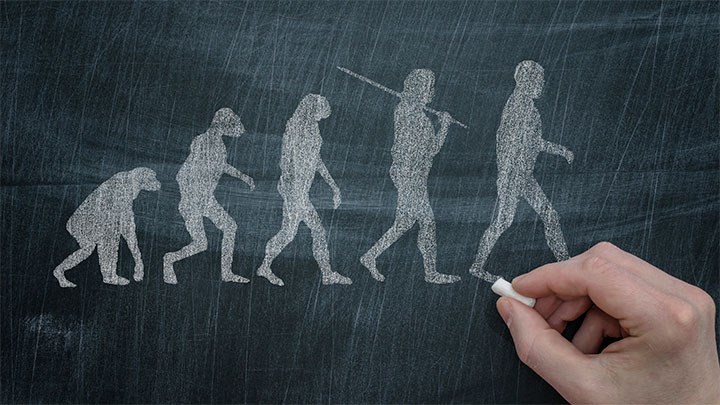Walking on two legs may explain human musicality and language

The rhythmic sound of footsteps has most likely contributed to human language as well as our musicality, according to researcher Matz Larsson.
The fact that humans walk on two legs is likely the reason we have developed our rhythmic, musical, and linguistic abilities, new research by physician and researcher Matz Larsson shows.
“This also explains why running and going for walks promote creativity,” he says.
Together with Dean Falk, professor of anthropology at Florida State University, he has published an article in the scientific journal Current Anthropology, discussing how the transition to walking on two legs rather than four is likely to not just have changed the way humans move – but also the way we think and communicate.

“Bipedal footsteps create rhythmic and more predictable sounds of movement, in comparison with the way in which our closest living relative, the chimpanzee, moves on all fours, with irregular steps among rustling tree branches.”
Two people walking in step creates good opportunities to tune into the surroundings. There are quiet intervals between steps – and when the steps are synchronised, the brain can group the sounds and distinguish the footsteps from the sounds of the surroundings.
“That way, a lion or an enemy can be noticed in time. Individuals with no rhythm who could not manage this most likely waddled, quite literally, their way out of the genetic pool.”
Rhythmic rocking in mummy’s tummy
Already in the womb, the unborn baby is affected by the woman’s rhythmic footsteps. Rocking up and down to the beat of the woman’s footsteps activates the baby’s hearing, balance, touch, and ability to sense its own position and movements, also known as proprioception. Normal walking pace is around 120 steps per minute, which is the same tempo as many pieces of music.
Our heartbeat has a different rhythm, around 70 beats per minute, and, says Matz Larsson, the heartbeat only stimulates hearing:
“This means that footsteps create a significantly more music-like experience. Babies are soothed by being rocked. Perhaps it’s because it simulates when the mother was walking around during pregnancy?”
Babytalk compensated for reduced bodily contact
Matz Larsson’s coauthor Dean Falk has long researched ‘baby talk’, that is, the way adults speak to babies in a rhythmic and almost musical fashion. When humans started walking upright, babies could no longer cling to the mother’s fur and maintain bodily contact.
“That’s how baby talk arose – as a substitute for the physical connection between babies and parents according to Dean Falk’s research. This may have stimulated the evolution of music and language,” says Matz Larsson.
The fact that walking on two legs change our brains and how we communicate today – what are your thoughts on that?
“In my experience, running and going for walks promote creativity and can give rise to new thoughts – and going for a walk with a friend stimulates the exchange of ideas.”
It was Matz Larsson’s son who got him thinking about how the human sense of rhythm developed.
“My son Filip has Down syndrome and is a great music lover. He has a special rhythmic ability and likes to walk in step with his dad. The sounds that are created when we are out walking replace the talking – he no longer uses words, he signs instead. Filip got me thinking outside the box,” says Matz Larsson.
Facts: Our closest living relatives are the Hominidae, or the great apes, such as gorillas and chimpanzees. About five to eight million years ago, we began evolving in different directions. It was around that time that humans started walking upright on two legs.
The article has been published in the scientific journal Current Anthropology. Read the article here: https://www.journals.uchicago.edu/doi/abs/10.1086/734554
Text: Anna Lorentzon
Photo: i-Stock och privat
Translation: Charlotta Hambre-Knight
